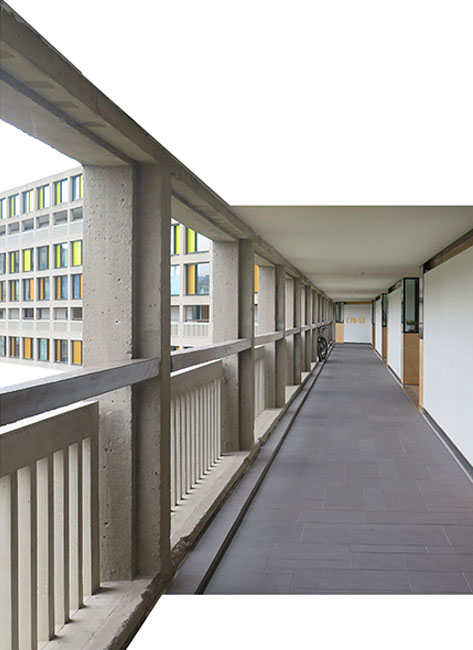Knutselen in de woningbouw
Instrumenten voor de aanpak van de naoorlogse woningvoorraad
Samenvatting
Bij alles wat er tegenwoordig aan transformaties in de bestaande stad plaatsvindt, is het van cruciaal belang de moderne massawoningbouw die na de Tweede Wereldoorlog in heel Europa is gebouwd, opnieuw te overdenken. In de afgelopen 20 jaar zijn talloze renovatieprojecten uitgevoerd, gericht op een ruimtelijke, functionele en esthetische, maar ook milieutechnische aanpassing van dit type woningbouw aan eigentijdse behoeften en levensstijlen. De Europese Unie moedigde deze experimenten aan, in eerste instantie via de URBAN Initiatives (1994), later via de Leipzig Charter on Sustainable European Cities (2007) en de Toledo Declaration (2010), om gemeenschappelijke doelstellingen te formuleren voor de herwaardering van de stedelijke en milieutechnische kwaliteiten van de stad – te beginnen vanuit de woonruimte. Dat ingrijpen dringend noodzakelijk is, werd recent nog eens bevestigd door de prijsvraag ‘Urban Revitalization of Mass Housing’ die VN-Habitat in 2013 lanceerde als onderdeel van zijn Global Housing Strategy. Vaak raken gebouwen waarin geëxperimenteerd is met nieuwe constructietechnieken als gewapend beton en geprefabriceerde elementen, vroegtijdig in verval. Typologische uniformiteit en een gebrek aan variatie beperken bovendien de mogelijkheden om gebouwen in de loop der tijd aan te passen, wat zich ook vertaalt in een esthetische serialiteit die we tegenwoordig als overmatig homogeen bestempelen. Vanuit het niveau van de stad bekeken is ook duidelijk dat: (1) functionele zonering al snel haar beperkingen toonde, (2) het ruimer en ‘vloeibaar’ maken van open ruimten niet in staat is gebleken gevoelens van verbondenheid te stimuleren, (3) de monumentale schaal van de architectuur vaak tot oncomfortabele woonomgevingen heeft geleid en dat (4) slechte verbindingen met de wijdere omgeving het gevoel van marginalisatie doen toenemen. Maar uiteindelijk blijkt in deze extreem schematische ordening – in combinatie met serialiteit en een gebrek aan duidelijke architectonische accenten – juist een grote kans voor transformatie te liggen. Ze verschaft ontwerpers namelijk een soort algemene basis om nieuwe elementen toe te voegen, waardoor specifieke ruimtelijke eigenschappen uit het verleden opnieuw kunnen worden gewaardeerd. In de huidige experimenten wordt meestal geprobeerd een grotere (maatschappelijke, functionele en typologische enzovoort) mix tot stand te brengen, net als een gevarieerder gebruik van publieke en particuliere ruimte, meer stedelijke complexiteit, een betere verhouding tussen de verschillende schaalniveaus en een effectieve articulatie van de openbare ruimte. In ieder project worden radicale en/of gematigde veranderingen gecombineerd tot een creatief proces waarin de gebouwen en het bestaande stadslandschap karaktervol worden vernieuwd.



